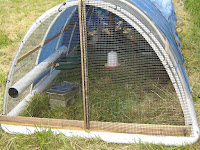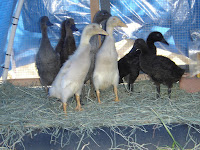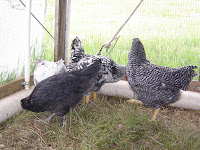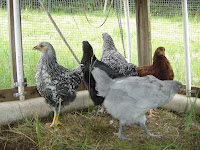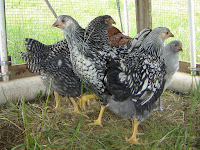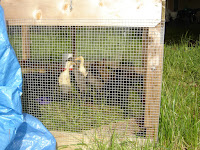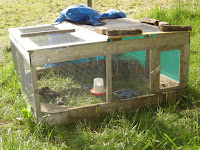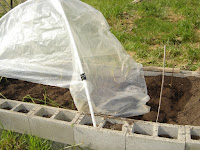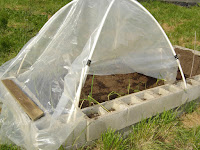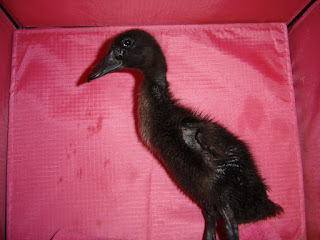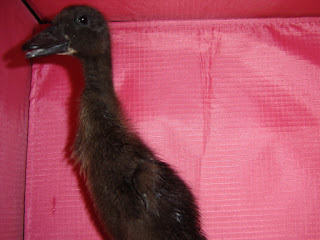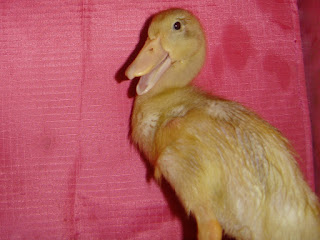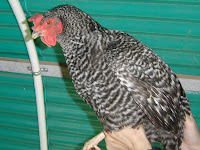This most recent flock of birds has been super eventful. One, we had 28 birds to start with (more than we have ever had in one flock) to start with. Second, we received a special order a week in, and needed to purchase eight more birds from the local feed store. We were successful in obtaining the chicks the customer wanted, and started them in their own space. We needed to integrate some of the older birds into the newer birds, so we built a second brooder. The price of lumber is out of this world, so we decided to use chipboard that is covered with a formica product to make this second brooder. We will see if this is the better option. I think it will be easier to clean, that's for certain. So, two brooders and 37 chicks about one week apart in age, however a few did die and we dropped down to 34 chicks.
Then, two weeks later, our meat chicks came in.... now that's the next move. We had another 25 new chicks to find space for. We decided to move the Cornish Cross Pull Pen into the garage, put down cardboard and a tarp to contain the shavings, and actually that worked pretty well. We used dry grass hay instead of the hemp shavings because of the overall size of the pen. Cleaned out the one larger brooder to put the meaties into and get them started.
So that helped with extra space for the first 26 primary birds and gave us a good space to get the meat birds started without needing to bring them inside the house. The eight new birds were in the smaller brooder. We gradually introduced the older birds into that second flock for the special order until there were 10 birds in there. So that seemed to solve that integration problem.
But, while all this was going on, we started noticing that one of the Australorps in the first flock was being too aggressive. Considering that the Australorp are supposed to be a very calm breed, we wondered if it was just having a difficult time adjusting to all the switch up, i.e. a lot of different birds peeping in the background, and being in a cage like environment without the enclosed walls of the brooder.
We knew we would be delivering the Australorp to its new home within the week so we basically put up with it chasing all the pullets around the pen for the time being, knowing that there was plenty of space for them to get away. But, I mean, it was really aggressive!
Delivered the four birds to the new customer and bang, five days later, she calls to say that "My Australorp is being aggressive with the other pullets.... is that normal?" Okay, well, we had one more Australorp in the remaining flock, so I offered to switch it out OR exchange it for a different breed. She really wanted an Australorp in her flock, so we did, and, at that point, it was pretty obvious that she had a Roo. He had developed a bright red comb and his tail was perking right up, just like a rooster's would.
We now have him separated in his own cage (dog cage) to avoid anymore damage to the flock. He is NOT happy, but has calmed down considerably since being in that cage.
Plus, over the weekend, we sorted out the pullets that we wanted to keep and which ones do we still want to sell. I noticed that one of the pullets had a very spongey feeling crop, all bloated and obviously was having an issue. But, she was still eating food, which didn't make any sense if she was having digestive issues. I took her out and isolated her with just water and grit, hoping that, since she was still eating, the grit might break down whatever was going on in her crop. Long story sort, it did not help. The crop ruptured and we needed to cull her before she suffered any longer.
In the meanwhile, I checked all the other pullets first thing in the morning, after a night without food, to ensure that their crops were "empty" like they are supposed to be first thing before they start a new day of feeding. Their crops all felt normal. I am assuming that the one pullet ate too much of the dry grass hay before we got them outside, and either didn't eat the grit that I had put in their pen or she did eat the grit, but it wasn't enough to help her with digesting the hay.
As of today, all chicks are outside. 14 pullets are in the Pull Pen modified with a roosting section, 10 pullets are in a smaller A-frame coop/pen (one of our earliest pens), 25 Cornish Cross out outside in a new Pull Pen, and a Australorp Rooster in a Dog Pen. All pens are now covered in various tarps for the next week worth of rain that is coming in from the Pacific Ocean. LOL
And on to the next adventure.... we are going to raise some ducks.




